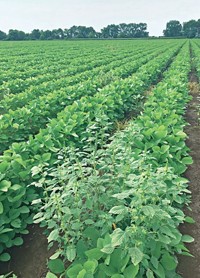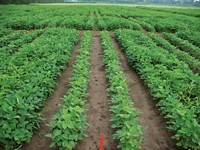Advertisement
Grab your lab coat. Let's get started
Welcome!
Welcome!
Create an account below to get 6 C&EN articles per month, receive newsletters and more - all free.
It seems this is your first time logging in online. Please enter the following information to continue.
As an ACS member you automatically get access to this site. All we need is few more details to create your reading experience.
Not you? Sign in with a different account.
Not you? Sign in with a different account.
ERROR 1
ERROR 1
ERROR 2
ERROR 2
ERROR 2
ERROR 2
ERROR 2
Password and Confirm password must match.
If you have an ACS member number, please enter it here so we can link this account to your membership. (optional)
ERROR 2
ACS values your privacy. By submitting your information, you are gaining access to C&EN and subscribing to our weekly newsletter. We use the information you provide to make your reading experience better, and we will never sell your data to third party members.
Biological Chemistry
Life After Roundup
Weed Science: The emergence of glyphosate-resistant weeds has put agriculture in a quandary
by Melody M. Bomgardner
April 18, 2011
| A version of this story appeared in
Volume 89, Issue 16
Glyphosate, the ubiquitous herbicide that changed the face of modern agriculture, is losing its effectiveness. That's not good, experts say, because glyphosate is irreplaceable.
The active ingredient in Roundup and many generic herbicides, glyphosate has become the world's top-selling herbicide by controlling weeds in major row crops grown from seeds genetically modified to resist it. But now some weeds are shrugging off the chemical as well and passing on resistance to future generations.
Monsanto introduced Roundup Ready soybeans in 1996, followed shortly by corn and cotton seeds featuring the trait. In 2010, 93% of soybean acres in the U.S. were planted with herbicide-tolerant crops. Herbicide-tolerant cotton captured 78% of planted acreage, and 73% of corn acres had the trait, according to the Department of Agriculture. Although other firms now offer herbicide-resistant seeds, Monsanto's Roundup Ready technology has the major market share.
"Glyphosate is a once-in-a-century product. There is nothing in the pipeline to replace it," says Doug Gurian-Sherman, senior scientist at the Union of Concerned Scientists. UCS is an advocacy group that says genetically modified crops do not advance sustainable agriculture. When it comes to glyphosate, however, Gurian-Sherman warns, "It's a really good herbicide, and we're squandering it."
He points to several attributes that have made glyphosate popular: It is cross-spectrum, controlling both broadleaf weeds and grasses, whereas most herbicides target one or the other. It breaks down quickly in the soil, so farmers can easily rotate crops without worrying about residue, or they can treat again as necessary. It is off-patent and cheap for farmers to buy. And it has lower acute toxicity than other herbicides, meaning it poses lower health risks for farmworkers.
The use of glyphosate radically changed how farmers control weeds. "Farmers were most definitely spoiled," says Brent Neuberger, technical support specialist at FMC, a chemical firm that develops and sells herbicides. "It was a system that was very, very easy. It didn't take a lot of thought—just spray Roundup and buy the seed. The spray kills everything but the crop. And away they go."
Robert Hartzler, a professor of weed science at Iowa State University, remembers an unintended side effect of Roundup use. "In the '90s, some of the good farmers would complain. Because here in Iowa, having a clean field was a symbol of being a good farmer, they were upset that anyone could have a clean field, so they couldn't distinguish themselves," he says. "Glyphosate could make a bad farmer look good."
Given enough time, weed scientists point out, weeds will always develop resistance to the herbicides used to control them. So it was inevitable that weeds resistant to glyphosate would appear. And they did, starting a decade ago with a case of resistant horseweed in Delaware. Now there are 21 species of weeds around the world that have developed resistance to glyphosate; 11 of them are in the U.S. Resistance is tracked by state because it is usually a localized occurrence.
Ironically, weeds such as waterhemp that were resistant to older herbicides helped create demand for Roundup Ready traits in the Midwest, Hartzler says. "One of the reasons for the rapid adoption of Roundup Ready soybeans was because weeds had become resistant to ALS herbicides," which are commonly used to inhibit the acetolactate synthase enzyme that is important to synthesizing some amino acids. The Roundup Ready trait provided a simple solution that lasted for 10 years. But now waterhemp is evolving resistance to glyphosate, as well as several other classes of herbicides."
Agriculture experts, including Monsanto scientists, agree that the popularity of the glyphosate-Roundup Ready combination is also a primary cause of its current troubles. Before the resistant seeds were developed, Hartzler explains, glyphosate was used primarily as a specialty product by farmers using no-till practices. They would spray the herbicides on fields before planting their crop. In Iowa, few farmers practice no-till methods, and they plant very early in the spring, so not many weeds encountered glyphosate.
"But with Roundup Ready crops, glyphosate could be used all by itself and provide full-season weed control. It was the only herbicide growers were using in their soybeans," Hartzler says. The overreliance on one herbicide was asking for trouble, although it is very unusual for a weed to survive glyphosate. "When you kill every weed, only weeds with a unique way to survive will live. Those are the resistant ones," he explains.
Historically, the solution to herbicide-resistant weeds was to kill them with a different herbicide that relied on a different mode of action. That way the farmer could exploit a different weakness in the plant. "Growers just assumed that for any problems that would arise, the chemical companies would be able to fix it," FMC's Neuberger says. FMC, for its part, plans to introduce a proprietary blend of two existing chemicals called Anthem to control resistance in weeds.
But no herbicide with a new mode of action has been discovered in the past 20 years. And so far, agricultural chemical makers have not revealed that any are in the pipeline.
The pipeline does contain several new herbicide-resistance trait combinations that would allow farmers to spray crops with older herbicides including 2,4-dichlorophenoxyacetic acid (2,4-D) and dicamba. But to many, that seems like moving backward. Unlike glyphosate, 2,4-D and dicamba are not considered reduced-risk pesticides by the Environmental Protection Agency. "Yes, we're definitely going back to older, nastier herbicides. That's a real problem," Gurian-Sherman warns.
What's more, weeds that have developed resistance to glyphosate are also difficult to manage with other herbicides. "All weed scientists recognize it's an uphill battle. Some people in the industry are thinking maybe the weeds are going to win this battle," Hartzler says. "We've been fortunate that industry has continued to develop new technology to keep us ahead of shifts in weed development. But in the past 40 to 50 years, the corn-soy rotation has dominated the landscape, and we've selected out weed species ideally adapted to the system and our herbicides."
Monsanto's position on the emergence of glyphosate-resistant weeds is to acknowledge that it is a problem while reassuring customers that it is manageable. "We know resistant weeds are a concern for our customers," a spokeswoman writes on the firm's blog. "Over the past 10 years, we've worked with farmers, weed scientists, and public institutions to monitor and research the issue and to provide recommendations on managing resistant weeds as well as prevention for further resistance."
For farmers, those management practices will take them back to the days before Roundup. They will have to walk their fields, looking to see what weeds develop, where, and when. They will then have to select herbicides known to control those particular weeds. They will have to make sure fields are already free of weeds before they plant and consider using different rotations of crops and various herbicides.
Changing practices will be difficult, Hartzler says. "In my cynical view, we treat agriculture like a factory and ignore the biological complexity. Because of the low profit margins, everything is designed to make it as simple as possible to cover as many acres as possible, by treating everything the same and minimizing the amount of time you spend in an individual field. We're getting to point where maybe that's not going to hold up."




Join the conversation
Contact the reporter
Submit a Letter to the Editor for publication
Engage with us on Twitter